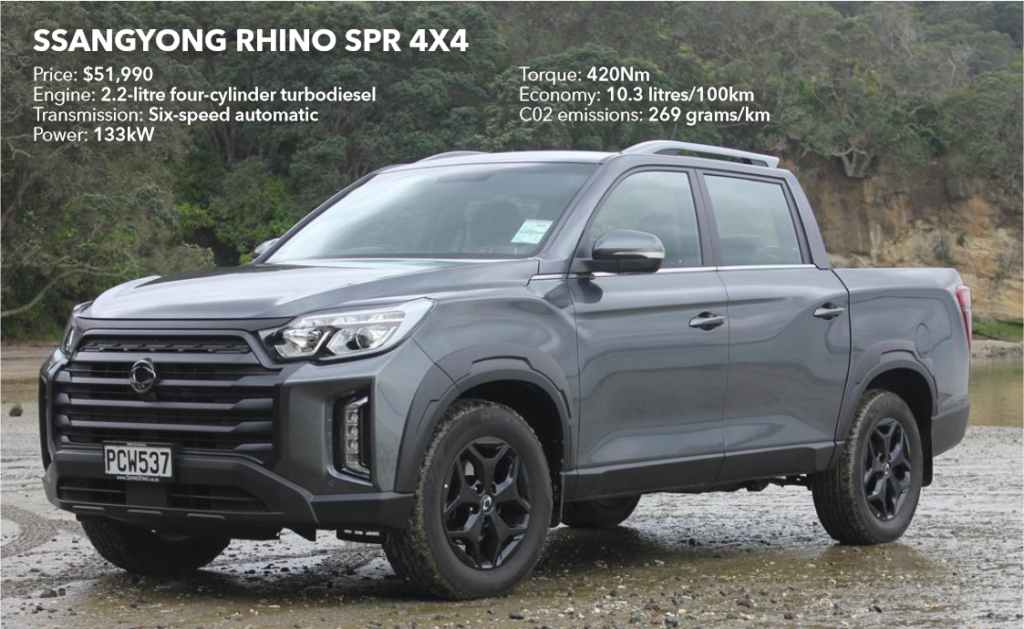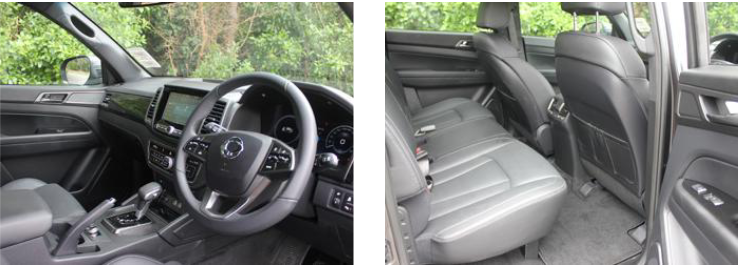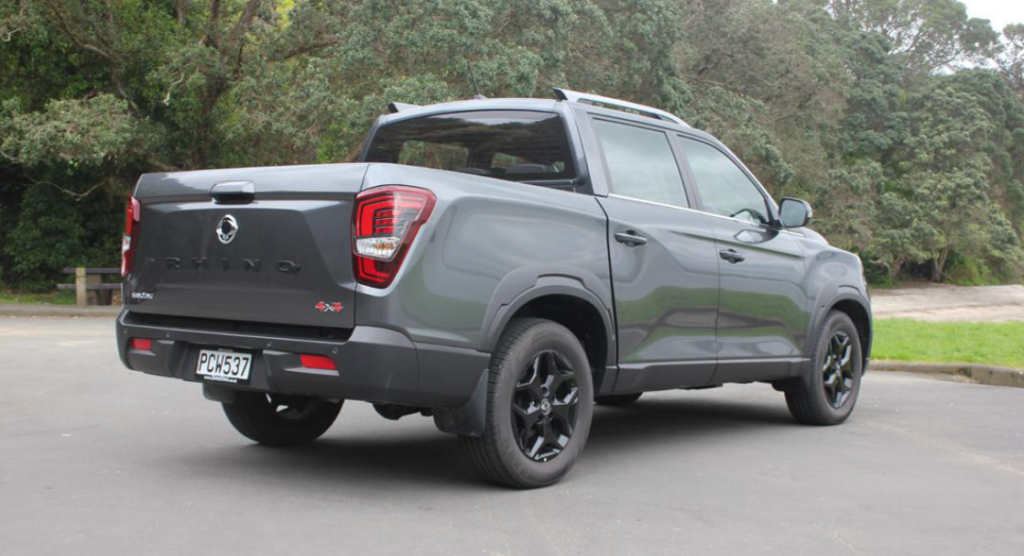
In spite of the distributors’ best efforts the SsangYong brand is a relative minnow in the New Zealand market.
But it offers a range of fleet-friendly vehicles and none more so that the Rhino double cab Ute which shares much of its design and technology with the Rexton SUV.
In South Korea and some overseas markets this ute is called the Musso, which directly translates as Rhino in Korean.
But rather than explaining that to customers, importer Great Lake Motor Distributors decided to use the anglicised name in New Zealand.
So, the SsangYong Musso and its larger sibling the SsangYong Musso Grande which has a longer tray are known locally as the Rhino and Rhino XL.
Uniquely, it’s the only double cab ute in the New Zealand market which is available ex-factory with two tray lengths. The Rhino SPR 4×4 auto as reviewed here is 5095mm long with a deck length of 1300mm but its elongated sibling the Rhino SPR 4×4 XL is 5405mm in length with a deck length of 1610mm.
The Rhino SPR offers a load area of 1011 litres and the XL with its extra 300mm of bed length, provides a load volume of 1262 litres, almost 25% more.
The load deck has a durable fitted load liner, a 12V/120W power outlet and rotating hooks to help tie down loads.
To further enhance its load and towing capacity the SPR XL has a leaf spring rear suspension for a 1025kg payload while the standard version features a five-link rear suspension which SsangYong says is preferred for off-road operation.
The Drive
The Rhino SPR is powered by the same 2.2-litre four-cylinder turbodiesel engine found in the Rexton.
Maximum power is 133kW at 4000rpm and a maximum torque of 400Nm is available from 1400rpm. The gearbox is a six-speed Aisin automatic.
It has a selectable 4×4 system. Power is delivered permanently to the rear wheels, with front-wheel drive dialled in electronically as required, with high and low ratios available as conditions demand.
The system includes hill descent control and hill start assist to provide grip and traction off-road.
Italian design house and coachbuilder Pininfarina tuned the Rhino to ensure low levels of noise, vibration and harshness (NVH) by fitting large rubber engine mount and eight body mounts in the vehicle’s body on frame construction.
Polyester wheelarch linings reduce road noise, the engine bay includes better sealing to improve sound-, dust- and waterproofing.
Wind noise is reduced by fourfold door sealing and aerodynamically designed wiper blades.
The result is a double cab ute that behaves like a family SUV.
It’s a surprisingly refined drive for a vehicle that’s designed to do double duty as a workhorse and family hauler.
The diesel engine is remarkably quiet yet has more than adequate power to get off the line smartly thanks to the low-down torque.
And the comfortable quality of the ride and responsive handling is more car-like than many other vehicles in this category.
Inside

The Rhino SPR is well equipped, and as well as offering good shoulder- and legroom up front, the second row of seats is designed for three passengers to travel comfortably in ample space.
The Nappa leather upholstery adds a touch of luxury to the ambience to the cabin with a ventilated and heated seats for the driver and front passenger and a heating function for the two rear outboard-mounted seats.
All models feature an advanced eight-inch infotainment system that includes AM/FM radio with Bluetooth connectivity; Apple CarPlay and Android Auto are standard on the SPR.
Other standard features include an adjustable tilt and telescopic steering wheel, electric windows,
cruise control, central door-locking, and air-conditioning with fine dust filters.
The Rhino SPR also comes with front and rear cameras providing 360 degree around-view monitoring which helps parking.
Overall the design of the cabin and instrumentation is conventional yet well executed.
The touch-screen and the controls are fairly intuitive and easy to use. There are plenty of storage spaces, and in spite of the conventional handbrake lever, there I’ a decently sized centre console between the two front seats.
Exterior design
SsangYong introduced styling upgrades to the Rhino for the 2021 model year with new front end and wheel designs.
The styling gives the vehicle a bold and muscular stance and adopts the purposeful front-end design of all new SsangYongs.
The grille spans the horizontal breadth of the front and harmonises with the bumper. On the side and rear, the character lines connect with the integrated LED headlights and radiator grille and the rear combination lights.
New black 18-inch alloy wheels plus a dark treatment to the door handles, mirrors and beltlines enhance the ute’s on-street presence.
There is a choice of five body colours: Grand White, Marble Grey as pictured here, Space Black, Atlantic Blue, and Indian Red.

Safety
As well as six airbags the Rhino SPR has autonomous emergency braking (AEB), forward collision warning (FCW), blindspot detection (BSD), lane change assist (LCA), and rear cross traffic alert (RCTA).
It also offers front vehicle start warning (FVSW), lane departure warning (LDW), and smart high beam (SHB).
SsangYong says the high-strength steel construction of its Quad-frame means the Rhino is stiffer than its competitors.
That was achieved by using 1.5Gpa-grade ultra-strength steel which improves body strength but reduces weight.
SsangYong says the Rhino also features impact absorbing elements in the steering wheel and steering column to minimise injuries from a frontal collision.
The structure and materials employed in the front of the body are designed to improve pedestrian safety.
Our View
As double cab utes like the Ford Ranger, Toyota Hilux, Nissan Navara, and Mitsubishi Triton become more and more upmarket and more and more expensive, challenger brands SsangYong, LDV and GWM are occupying the space left behind.
Though it may not have the cachet of the Ranger or the Hilux, if you compare like with like the Rhino offers buyers a well specified and capable vehicle at a far more affordable price.








